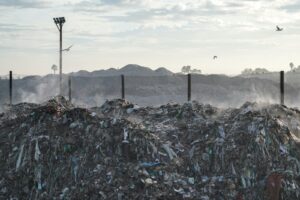London has more airborne microplastics than any other city
London has the highest level of airborne microplastics than any other major city, with 92% of these microplastics coming from textiles, according to a study published by researchers at Kings College London.
The researchers used a rain gauge to collect atmospheric dust in central London during winter 2018, this dust was then filtered and analysed using a specialist instrument.
When comparing the data to other similar studies, the researchers found that London has the highest level of microplastics in the air compared to Dongguan, China, Paris, France and Hamburg, Germany.
The levels of microplastics in London were almost 20 times higher than levels found in the French Pyrenees.
92% of the airborne microplastics found in this study came from plastic textiles, this includes clothing, carpets and upholstery.
The impact that these microplastics have on humans remains relatively unknown, however, according to the researchers, various occupational studies have shown that when workers are exposed to high levels of microplastic dust they can suffer from chronic inflammation of the airways.
Lead author of the study, Dr Stephanie Write, said: ‘We found some of the highest reported levels of microplastics in atmospheric dust, with local sources appearing influential.
‘From where microplastics are emitted and for how long they are airborne remains unknown but are key for understanding long-range transport potential to the wider environment.
‘An important step is predicting risk to estimate human exposure to airborne microplastics.’
‘There is no conclusive evidence base to suggest this is necessary, but if desired, individuals should avoid products which microplastics have been found to contaminate, (bottled water, salt and some seafood products).
‘Additionally, individuals should be conscious of adequate ventilation when carrying out activities which may emit microplastics, such as hoovering and laundering.
‘All this should, of course, be weighed against the alternative, for example, opening a window may not be the best option if you live next to the main road or drinking anything other than bottled water may not be safe in some regions of the world.’
In related news, 2,700 water samples collected from the four European sea fronts and the nine major rivers in Europe shows that 100% of the water sources contain microplastics.
Photo Credit – Pixabay














